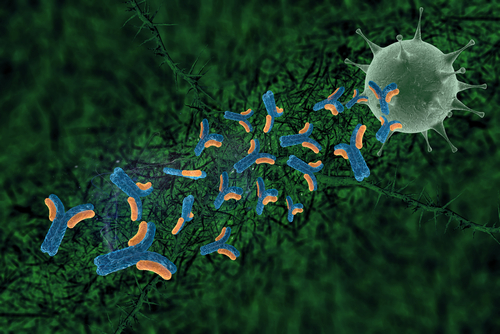An ongoing clinical trial from University College London in collaboration with Christie Hospital NHS Foundation Trust found that patients with Stage IA or Stage IIA Hodgkin Lymphoma may be adequately treated with chemotherapy alone and do not need to undergo radiotherapy to be free from disease. The findings of the trial, “PET Scan in Planning Treatment in Patients Undergoing Combination Chemotherapy For Stage IA or Stage IIA Hodgkin Lymphoma (RAPID),” were reported for 571 patients who have already undergone three cycles of doxorubicin hydrochloride IV, bleomycin sulfate IV, vinblastine IV, and dacarbazine IV (ABVD) and positron-emission tomography (PET) scanning. Results are showing that a majority of patients may not need to undergo radiotherapy in addition to combination chemotherapy to remain disease-free three years later.
The goal of the Phase 3 study is to learn how combination chemotherapy can adequately treat Hodgkin Lymphoma patients without further treatment with radiotherapy. Radiotherapy can cause long-term side effects, including heart disease and second cancers, motivating the interest in limiting patient exposure to radiation treatment.
Three groups of patients were formed from the 602 Stage IA or Stage IIA Hodgkin Lymphoma patients enrolled in the trial. All groups received the same ABVD treatment and underwent PET scanning. For those patients who had a positive result that indicated remaining cancerous growth, 30 Gy of involved field radiotherapy (IFRT) were delivered in daily fractions of 1.8 – 2.0 Gy. Anyone in the group who had a negative PET finding after undergoing chemotherapy and PET was assigned to one of two groups. One group received IFRT and the other group received no radiation therapy for their cancer.
As reported in the writeup for the clinical trial, which was entitled “Results of a Trial of PET-Directed Therapy for Early-Stage Hodgkin’s Lymphoma” and published in the journal New England Journal of Medicine, the survival rate of all patients was over 90%. For the non-IFRT patients, 90.8% survived without seeing worsening of their lymphoma, while 94.6% of IFRT-receiving patients saw no disease worsening. However, overall survival for the non-radiotherapy group was 99%, and for the IFRT group, 97.1%. The authors attribute the higher survival in non-IFRT patients to less damage in healthy tissues.
“This research is an important step forward,” said Professor John Radford, leader of the trial in The University of Manchester, in a news report from Leukaemia & Lymphoma Research. “The results of RAPID show that in early stage Hodgkin lymphoma radiotherapy after initial chemotherapy marginally reduces the recurrence rate, but this is bought at the expense of exposing to radiation all patients with negative PET findings, most of whom are already cured.” In other words, a personalized approach to treating blood cancers can be safely deployed by determining an individual’s risk of disease progression and adjusting treatment accordingly.
One patient is particularly excited about the results of the trial. “When my end of chemo PET scan came back clean I cannot tell you the relief and joy I felt,” said Shiv Meaker, who was diagnosed with Hodgkin Lymphoma in 2012 when she was 33. “It meant my chemo had worked and the possibility of radiotherapy, more uncertainty, yet more pressing hold on my life, was lifted.”


